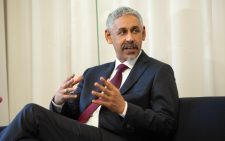Kenya debt load surged to Sh9.6 trillion in April

Kenya’s stock of public debt rose by Sh243.45 billion in April this year in a record build-up of liabilities. Central Bank of Kenya’s latest data reveals that the country’s public debt stock closed at Sh9.634 trillion in April from Sh9.390 trillion recorded in March.
The rate of borrowing is contrary to the Kenya Kwanza government’s promise to reduce borrowing. This marks a substantial increase from the previous month, signalling growing concerns over the nation’s fiscal stability.
The debt is expected to rise even faster given that the government accepted over Sh200 billion from an infrastructure bond that sought just Sh60 billion in May.
Domestic debt stood at Sh4.5 trillion while external debt hit Sh5.09 trillion during the period in review as the country choked up more domestic debt due to high interest rates on the international market pushing local borrowing rates to nearly 16 percent.
The rising public debt has been a pressing issue for Kenya, and the latest figures indicate a worrisome trend. Former Central Bank of Kenya (CBK) Governor Patrick Njoroge had warned that the domestic market may struggle to provide the amount of money the government needs to borrow in the new financial year.
The increase of Sh243.45 billion in a single month raises eyebrows, as it points to potential challenges in managing the country’s finances effectively.
With the debt stock now reaching Sh9.634 trillion, government officials and economists are urging for prudent fiscal measures to curb the escalation.
Of particular concern is the growing share of external debt in Kenya’s overall debt portfolio. In January 2023, external debt accounted for 50.97 percent of the total debt, but in just four months, it surged to 52.86 per cent. This marks a significant shift in the country’s debt structure and has raised concerns about its vulnerability to external economic shocks.
Comparing the current external debt share to previous data highlights the accelerating pace of Kenya’s external borrowing. Just a year ago, in June 2022, external debt accounted for 50.01 per cent of the total debt.
Kenya’s stock of public debt crossed the Sh9 trillion mark for the first time in December, pushing the country closer to hitting the Sh10 trillion ceiling set by Parliament in June last year.
This is happening at a time a weak Kenyan shilling has piled pressure on the country’s external debt repayments with some 69.3 per cent of foreign debt denominated in US dollars.
President William Ruto has promised to reduce non-priority spending by Sh300 billion in the current year’s budget in a cut that the Cabinet said will be included in the supplementary budget in a bid to reduce pressure on a broke Treasury.
However, the budget went up instead of coming down. This indicates a rapid increase in foreign borrowing, posing potential risks to the country’s overall financial stability and economic sovereignty.
It is crucial for Kenya to adopt sound fiscal management practices, prioritise debt reduction strategies, and implement robust revenue generation mechanisms to alleviate the mounting debt pressure.
This comes at a time when CBK has increased domestic interest rates meaning that the government will access domestic interest rates at even higher cost as the private sector gets crowded out.
Prompt and decisive action, including sound fiscal policies and improved financial management, is essential to steer Kenya towards a more sustainable and stable economic path.












